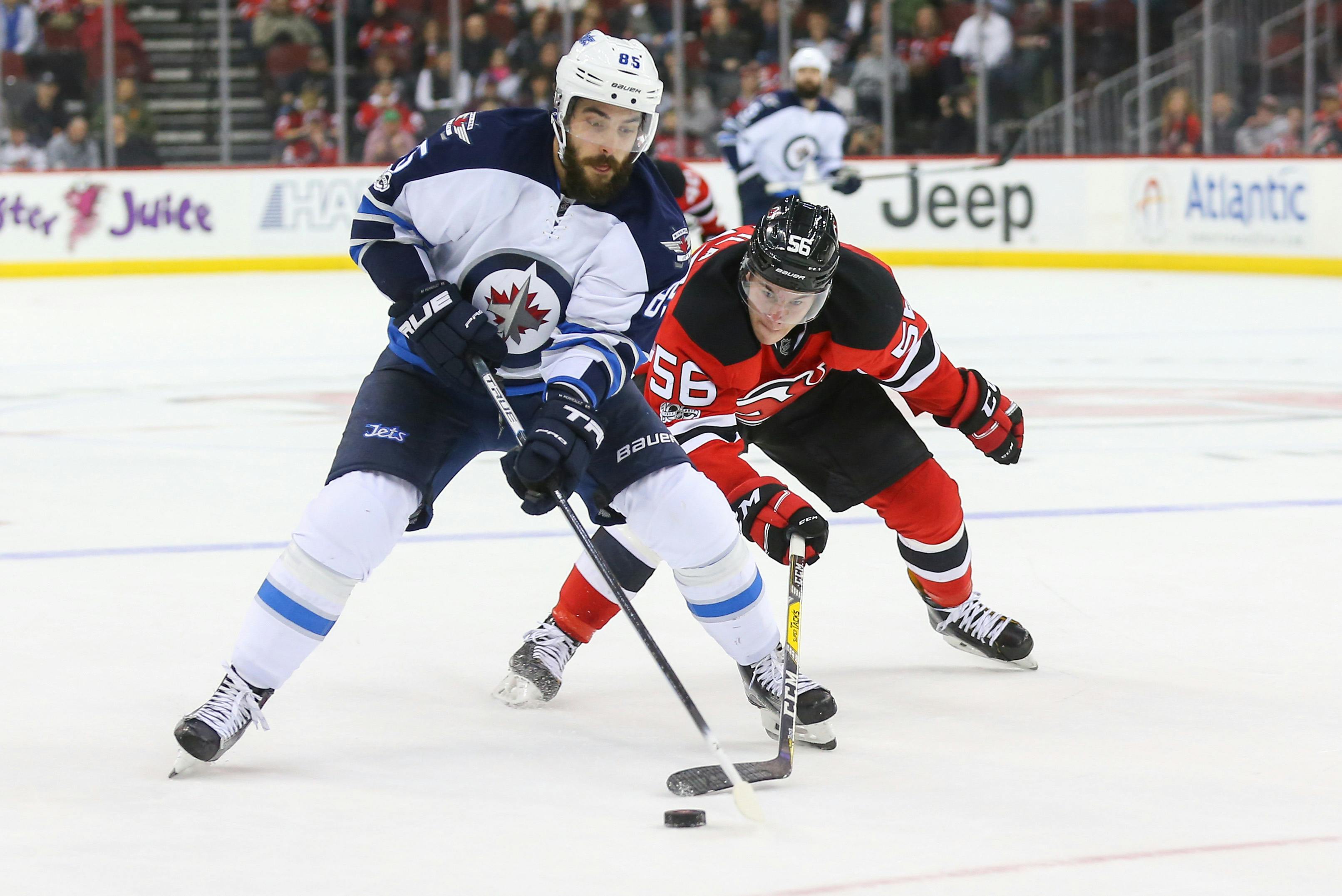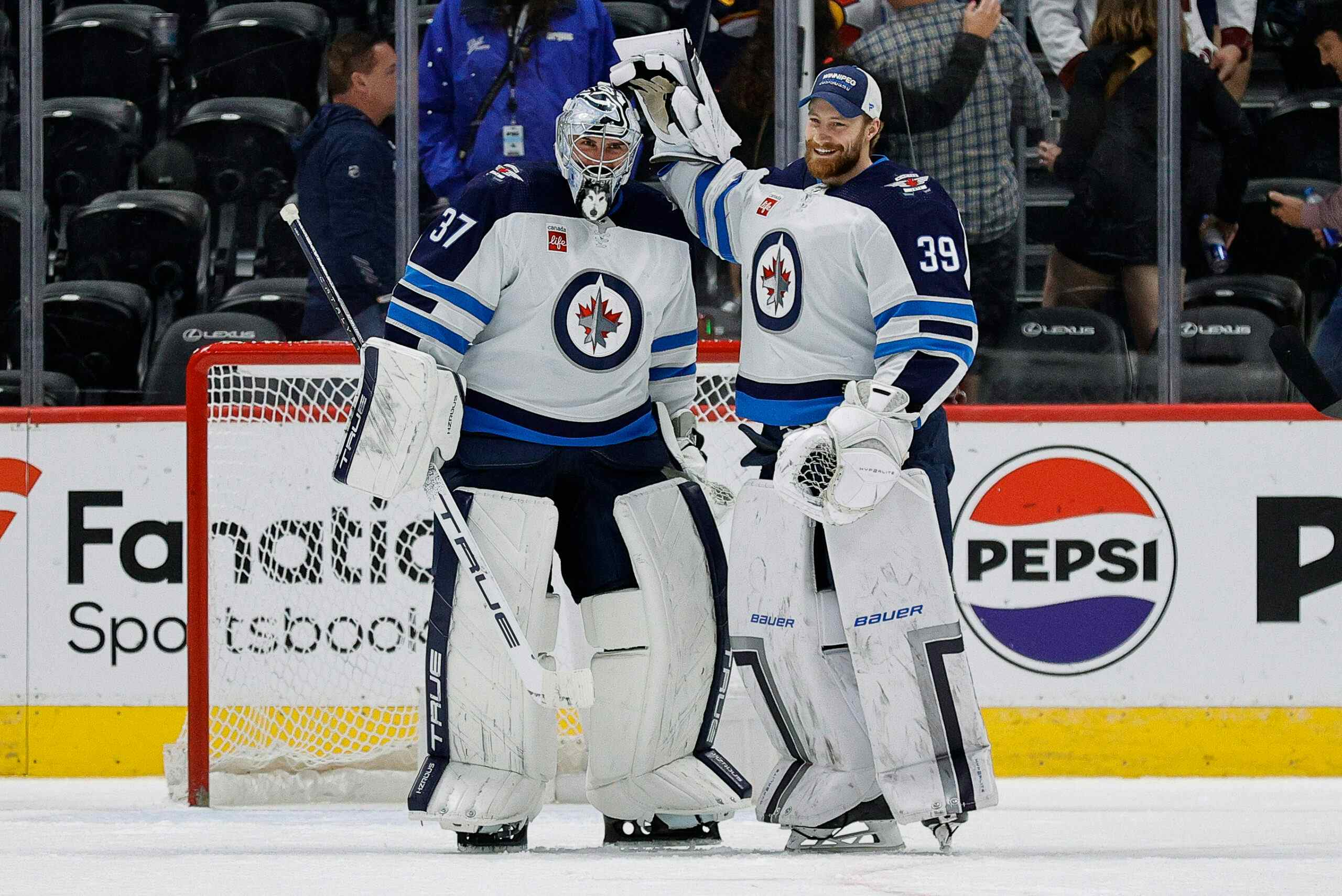Mathieu Perreault’s next contract has already been paid for

By Garret Hohl
7 years agoLast time we showed how Mathieu Perreault provided exceptional value to the Winnipeg Jets in terms to his impact on the ice over a season. We mentioned in passing that Perreault was on one of the best value contracts in the NHL and that he still likely would be over his next contract.
Of course, there is also the argument that Perreault’s results likely start faltering at his age and his average cost rises over the next four seasons by an average amount of 1.125 million dollars.
Let’s take a deeper look into that.
Perreault’s Value

Luke Solberg, a contributor at Hockey-Graphs, has been working on combining both costs and value with DTMAboutHeart‘s WAR data. He sent this table after the last Perreault article, showing how Perreault was one of the best value contracts in the NHL.
According to this information, the Jets saved about 4.84 million dollars over their three years with Perreault. The issue with this data is that the model was tricked by Perreault extending his contract with the Jets a year early, and the model actually used Perreault’s soon to be $4.125M AAV instead of his actual $3M AAV.
In other words, if the Jets were paying an extra 1.125 million dollars per season, he’d still been one of the best values in the NHL.
When we fix this error, it turns out that the Jets actually saved $8,211,501.62 instead of the above listed near five million. This would place Perreault’s last contract as the fourth best value earned recent contract.
Fills a Need
Perreault is the perfect player for Winnipeg, a veteran who provides great value with minimal cost impact, a bargain deal player. He’s the type of player that helps a budget team win. Yes, I said budget team. While the Jets have stated they are willing to spend if need be, the team has yet to sit outside of the bottom half of the league in salary. Until the team pays unlike a budget team, they are one, even if it is only temporarily.
The Jets are a struggling team, likely on the up-rise with their potential young stars. Rebuilding or retooling teams need players like Perreault; he is a veteran presence who provides positive value while on the ice, and that on-ice value is actually below market costs.
When you look back at failed rebuilds or retools, there are typically a lot of the same mistakes made: bad asset management and poor veteran insulation choice.
Despite narratives on certain players knowing how to win, grit, or whatnot, struggling teams typically lose due to just not being good enough. The value of the players combined, plus coaching, just didn’t add up over the required threshold.
To get out of the hole, teams need to acquire enough value for the future. This is where selling off expiring players for futures, drafting, and developing all come into play.
The latter issue is where we move into intangible versus tangible discussion. A rebuilding team will struggle as it introduces youth to their roster. These young players require strong veterans to smooth out the transition. This requires far more than being good in the room, something Scott Campbell recently touched on in the Winnipeg Free Press.
Quality veterans will help enforce good professional practices, reinforce the coach’s systems and beliefs, and force young players to push to earn roles. They will also push the team out of the hole through their on-ice play.
We are not privy to Perreault’s intangible impact on the game, and even those behind closed doors would only provide a guess of that value. Still, we do know that Perreault plays a hard game and never slacks. We know he provides a lot of value on the ice and is a great player for the youth to strive to be like. We also know that Perreault is very good at hockey.
That’s the type of veteran a young team needs.
Age Descent and Cost Change

High-Low Projections provided by Luke Solberg (easier to use someone else’s model than create your own for a quick post)
Of course, this brings up the two problems brought up at the start of the article: Perreault’s age and raise.
At 29-years-old, given what we currently know, Perreault is more likely to trend downward in impact than stay the same or improve. At the same time, Perreault will be receiving a 1.125 million dollar per year raise.
Perreault is going to cost more and likely return less.
While garnering an average of 2.07 wins a season from his first contract, we expect the Jets to only garner between 1.47 to 1.6 wins per season over the next contract. This would shift the Jets from paying 1.45 million dollars per win to between 2.8 to 2.6 million. That’s an increase by between 77-to-93 percent. This projection also assumes no substantial change in usage or durability than the previous seasons, which may not be the case.
At the surface level, this could seem very concerning; Perreault will no longer be remotely as cost efficient as he was previously.
However, this really is not an issue when looking at the bigger picture.
On average, teams are spending about 3.8-to-4.2 million per win on players. Perreault’s next contract will still be above average value even when accounting for potential loss in impact.
When we look at Perreault’s projected time as a Jet between the two contracts as a whole, we estimate the Jets pay around two-million dollars per win. This still places Perreault as one of the best value players in the league.
Another way to look at it is that the Jets already saved about eight-million over their last contract with Perreault, so Perreault has already paid for the last two seasons of his next contract himself. Had the Jets paid proper market price for Perreault’s first three seasons on the team, this would be equivalent to the Jets’ paying only about two-million a season for the next contract.
All numbers provided by Corsica.hockey unless otherwise stated.
MORE FROM GARRET
- Many Jet fans undervalue one of the league’s best forwards
- Armia vs Copp vs Dano vs Lowry
- Is Petan on the power play a big enough pay off over Thorburn?
- What is WAR and how to use it
- Chemistry, roles, and the wrongful usage of Nic Petan
- Jets past performance in WAR, defenders
- Jets record with and without Enstrom
- Manitoba Moose production levels
- Jets have holes to fill at forward
- Jets have holes to fill on the blue line
Recent articles from Garret Hohl





